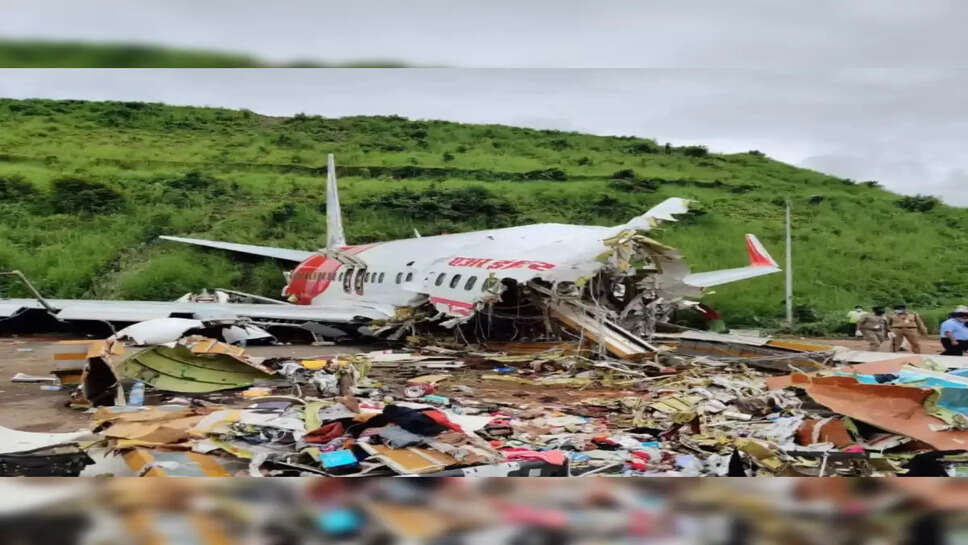Tragedy in the Skies: Air India 787 Crash Sparks Crisis for Tata-Owned Airline

In a tragic development that has sent shockwaves through India's aviation and corporate sectors, an Air India Boeing 787 Dreamliner crashed during a domestic flight, raising critical questions about aircraft safety and crisis response mechanisms. Though the full details of the incident are still emerging, preliminary reports suggest a catastrophic failure occurred mid-air, leading to the aircraft’s descent and subsequent crash near a sparsely populated region. The crash has not only sparked nationwide mourning but has also cast a dark shadow over the airline’s hard-earned safety reputation.
The Dreamliner, one of the most technologically advanced and fuel-efficient aircraft in the world, has long been positioned as the flagship of Air India’s fleet. Its inclusion was meant to symbolise a rebirth of the airline under the Tata Group’s stewardship. The recent crash has turned this symbol of modernisation into a focal point of controversy and scrutiny.
Early Morning Tragedy
The incident occurred in the early hours of the morning, with Flight AI-276 en route from Delhi to Bangalore. Shortly after reaching cruising altitude, communication with the aircraft was lost. Air traffic controllers declared an emergency and began coordinating with air force and disaster response teams. Within hours, the wreckage was located in a rural area, with emergency crews rushing to the site.
While the exact cause of the crash is under investigation, early speculation ranges from potential technical malfunctions to issues related to maintenance protocols. Eyewitnesses in the area reported seeing smoke trailing from the aircraft before it nosedived towards the ground. The black box has been recovered, and aviation experts are now working round the clock to analyse its contents.
Tata Group’s Swift Response
Even as the nation grappled with shock, the Tata Group—owners of Air India—demonstrated a swift and decisive response. Top executives, including Tata Sons Chairman N. Chandrasekaran, were reportedly informed within minutes of the incident. Emergency command centres were activated, and senior Air India officials were dispatched to the crash site as well as to the airports involved.
Tata Group released a somber but action-oriented statement, expressing deep condolences to the families of the victims and committing to full cooperation with investigative agencies. Crisis management teams were set up to handle media, legal, and technical aspects of the tragedy. Passenger manifestos were verified, next of kin were contacted, and arrangements were made for family assistance and compensation.
This immediate and coordinated response has been praised by many, including government officials, who acknowledged the Tata Group’s proactive approach. Still, critics argue that no amount of post-crisis management can undo the damage caused to the airline’s image.
Safety Reputation Under Threat
Air India has traditionally maintained a robust safety record, especially in the international sector. However, the Dreamliner crash threatens to undermine decades of progress. Aviation is a high-trust industry, and public confidence is central to its functioning. The fact that the accident involved a Boeing 787—an aircraft associated with cutting-edge safety and performance—adds a layer of complexity to the narrative.
For Tata Group, which has invested heavily in revitalising the brand and operations of Air India, the crash is a potential setback of enormous proportions. The group’s strategy of modernising fleets, upgrading services, and improving punctuality now faces its most severe test yet.
Furthermore, the crash might have regulatory ramifications. The Directorate General of Civil Aviation (DGCA) has already launched an inquiry into the incident. Global aviation bodies are also expected to monitor the investigation closely. If systemic flaws are uncovered, it could lead to grounding of other Dreamliner aircraft in Air India’s fleet or even stricter international oversight.
Questions Around Boeing
This tragedy also reopens old wounds regarding Boeing’s Dreamliner series. The aircraft has faced multiple issues since its debut, from battery fires to structural concerns. While Boeing has made significant strides in addressing these problems, the recurrence of such a devastating event involving a 787 will likely reignite global scrutiny.
Already, industry insiders are speculating whether the crash was related to manufacturing issues or airline-specific maintenance. This distinction will be critical not just for Boeing, but also for Air India and Tata Group, as they try to restore public confidence.
Impact on Passengers and Families
As with any aviation disaster, the human toll is immeasurable. Families have been left devastated, many still awaiting definitive word about their loved ones. The government has pledged support, and counselling services have been offered at both departure and arrival airports. Memorial services are being planned, and financial relief is being expedited.
Public vigils have been held across the country, and social media is flooded with tributes. The pain is shared by the nation, especially given that Air India is often viewed as a national symbol.
Corporate and Strategic Implications
From a corporate perspective, the crash could have far-reaching implications. Insurance claims, regulatory fines, and possible lawsuits are only the beginning. Investor sentiment toward Tata’s aviation ventures may turn cautious, especially in the short term. There is also the challenge of managing internal morale. Cabin crew and pilot unions have reportedly requested safety audits and transparent communication from the management.
On a broader scale, the crash may affect international partnerships. Air India had recently been working to expand its global reach through code-sharing agreements and new international routes. Some of these plans may now face delays or cancellations.
The Road Ahead
Rebuilding trust after such an incident is a formidable task. It will require full transparency in the investigation process, visible safety enhancements, and a renewed commitment to excellence. For the Tata Group, this is not just about damage control—it’s a moment that will define the future of its aviation legacy.
Public statements alone will not suffice. Clear action plans, visible leadership, and a relentless focus on passenger safety must become the cornerstones of the airline’s strategy moving forward. The nation and the world are watching, and the next steps will determine whether Air India can rise again from this dark chapter.
Despite the challenges, the Tata Group has the resources, legacy, and leadership to navigate this crisis. Whether they can transform this tragedy into a catalyst for systemic improvement remains to be seen. For now, the skies are quiet, the nation mourns, and an investigation continues—one that must bring answers, accountability, and, hopefully, change.
